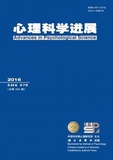Polarizing products are those that are liked by some but hated by others. With the advent of the individualized consumption era, it is increasingly common for products that meet individual needs to receive mixed reviews. How do consumers perceive polarizing products? What factors influence consumers’ preference for polarizing products? What is the mechanism and boundary condition? The answers to these questions are significant for firms to engage in effective marketing. Polarization of word of mouth will improve consumers’ perceived risk and lead to “conflict” association. It may also generate perceived uniqueness of the product. These product features correspond to the behavior differences in need for uniqueness, conflict resolution style, and regulatory focus between independent and interdependent self-construal from the self-construal theory. Therefore, self-construal is an important antecedent variable that influences consumers’ preference for polarizing products and the need for uniqueness, conflict resolution style, as well as regulatory focus mediate this relationship. In addition, level of shopping risk, shopping tasks (self-purchase versus other-purchase), public or private context, and product category are the boundary conditions of this mediating effect.




